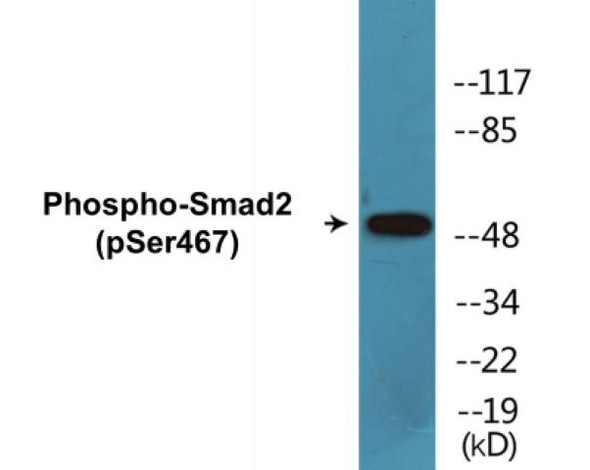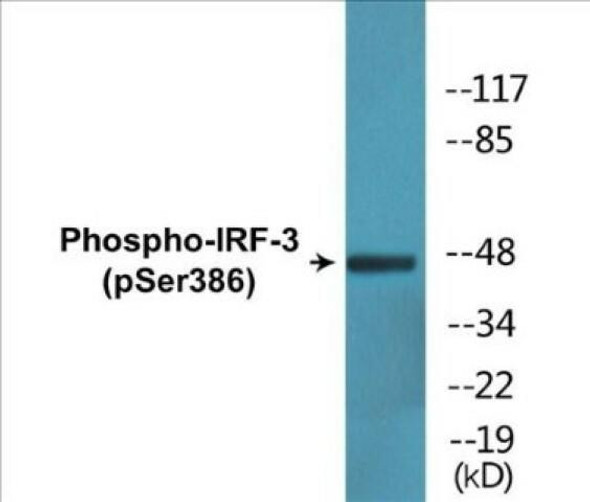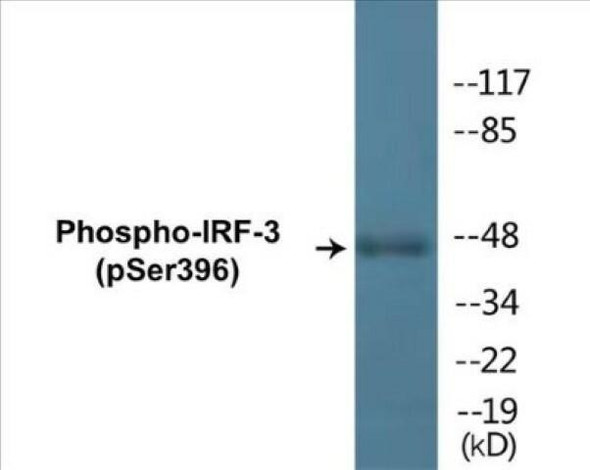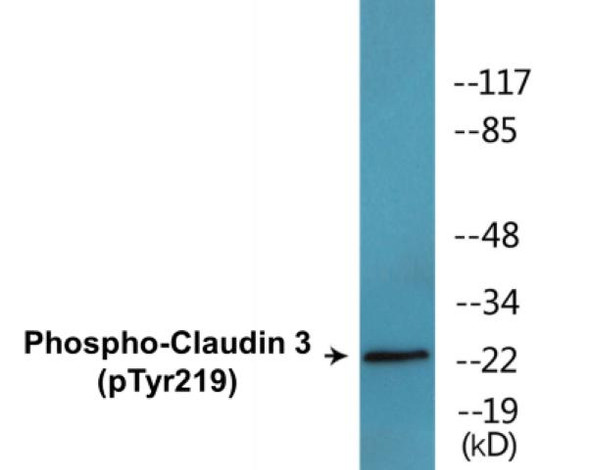Smad2/3 (Phospho-Thr8) Colorimetric Cell-Based ELISA Kit
- SKU:
- CBCAB00446
- Product Type:
- ELISA Kit
- ELISA Type:
- Cell Based Phospho Specific
- Research Area:
- Immunology
- Reactivity:
- Human
- Mouse
- Rat
- Detection Method:
- Colorimetric
Description
Smad2/3 (Phospho-Thr8)Colorimetric Cell-Based ELISA Kit
The SMAD2/3 Phospho Thr8 Colorimetric Cell-Based ELISA Kit from Assay Genie is a powerful tool for researchers studying SMAD2/3 signaling pathways. This kit allows for the quantitative detection of phosphorylated SMAD2/3 Thr8 in cell lysates, providing valuable insights into the activation of these important proteins.SMAD2 and SMAD3 are key regulators of TGF-β signaling, controlling cellular processes such as growth, differentiation, and apoptosis. Phosphorylation of Thr8 is essential for the activation of SMAD2/3 and their translocation into the nucleus to regulate gene expression.
With its high sensitivity and specificity, this kit ensures accurate and reproducible results, enabling researchers to confidently analyze SMAD2/3 phosphorylation in a variety of cell types and experimental conditions. By understanding the role of SMAD2/3 in signaling pathways, researchers can gain valuable insights into diseases such as cancer, fibrosis, and developmental disorders, paving the way for potential therapeutic interventions.
| Product Name: | Smad2/3 (Phospho-Thr8) Colorimetric Cell-Based ELISA |
| Product Code: | CBCAB00446 |
| ELISA Type: | Cell-Based |
| Target: | Smad2/3 (Phospho-Thr8) |
| Reactivity: | Human, Mouse, Rat |
| Dynamic Range: | > 5000 Cells |
| Detection Method: | Colorimetric 450 nm |
| Format: | 2 x 96-Well Microplates |
The Smad2/3 (Phospho-Thr8) Colorimetric Cell-Based ELISA Kit is a convenient, lysate-free, high throughput and sensitive assay kit that can detect Smad2/ protein phosphorylation and expression profile in cells. The kit can be used for measuring the relative amounts of phosphorylated Smad2/ in cultured cells as well as screening for the effects that various treatments, inhibitors (ie. siRNA or chemicals), or activators have on Smad2/ phosphorylation.
Qualitative determination of Smad2/3 (Phospho-Thr8) concentration is achieved by an indirect ELISA format. In essence, Smad2/3 (Phospho-Thr8) is captured by Smad2/3 (Phospho-Thr8)-specific primary antibodies while the HRP-conjugated secondary antibodies bind the Fc region of the primary antibody. Through this binding, the HRP enzyme conjugated to the secondary antibody can catalyze a colorimetric reaction upon substrate addition. Due to the qualitative nature of the Cell-Based ELISA, multiple normalization methods are needed:
| 1. | A monoclonal antibody specific for human GAPDH is included to serve as an internal positive control in normalizing the target absorbance values. |
| 2. | Following the colorimetric measurement of HRP activity via substrate addition, the Crystal Violet whole-cell staining method may be used to determine cell density. After staining, the results can be analysed by normalizing the absorbance values to cell amounts, by which the plating difference can be adjusted. |
| Database Information: | Gene ID: 4088/4087, UniProt ID: P84022/Q15796, OMIM: 114500/603109/601366, Unigene: Hs.618504/Hs.714621/Hs.12253/Hs.705764 |
| Gene Symbol: | SMAD2/SMAD3 |
| Sub Type: | Phospho |
| UniProt Protein Function: | Receptor-regulated SMAD (R-SMAD) that is an intracellular signal transducer and transcriptional modulator activated by TGF-beta (transforming growth factor) and activin type 1 receptor kinases. Binds the TRE element in the promoter region of many genes that are regulated by TGF-beta and, on formation of the SMAD3/SMAD4 complex, activates transcription. Also can form a SMAD3/SMAD4/JUN/FOS complex at the AP-1/SMAD site to regulate TGF-beta-mediated transcription. Has an inhibitory effect on wound healing probably by modulating both growth and migration of primary keratinocytes and by altering the TGF-mediated chemotaxis of monocytes. This effect on wound healing appears to be hormone-sensitive. Regulator of chondrogenesis and osteogenesis and inhibits early healing of bone fractures. Positively regulates PDPK1 kinase activity by stimulating its dissociation from the 14-3-3 protein YWHAQ which acts as a negative regulator. |
| NCBI Summary: | The protein encoded by this gene belongs to the SMAD, a family of proteins similar to the gene products of the Drosophila gene 'mothers against decapentaplegic' (Mad) and the C. elegans gene Sma. SMAD proteins are signal transducers and transcriptional modulators that mediate multiple signaling pathways. This protein functions as a transcriptional modulator activated by transforming growth factor-beta and is thought to play a role in the regulation of carcinogenesis. [provided by RefSeq, Apr 2009] |
| UniProt Code: | P84022 |
| NCBI GenInfo Identifier: | 51338669 |
| NCBI Gene ID: | 4088 |
| NCBI Accession: | P84022.1 |
| UniProt Secondary Accession: | P84022,O09064, O09144, O14510, O35273, Q92940, Q93002 A8K4B6, B7Z4Z5, B7Z6M9, B7Z9Q2, F5H383, |
| UniProt Related Accession: | P84022 |
| Molecular Weight: | 25,722 Da |
| NCBI Full Name: | Mothers against decapentaplegic homolog 3 |
| NCBI Synonym Full Names: | SMAD family member 3 |
| NCBI Official Symbol: | SMAD3 |
| NCBI Official Synonym Symbols: | LDS3; LDS1C; MADH3; JV15-2; HSPC193; HsT17436 |
| NCBI Protein Information: | mothers against decapentaplegic homolog 3 |
| UniProt Protein Name: | Mothers against decapentaplegic homolog 3 |
| UniProt Synonym Protein Names: | JV15-2; SMAD family member 3; SMAD 3; Smad3; hSMAD3 |
| Protein Family: | Mothers against decapentaplegic |
| UniProt Gene Name: | SMAD3 |
| Component | Quantity |
| 96-Well Cell Culture Clear-Bottom Microplate | 2 plates |
| 10X TBS | 24 mL |
| Quenching Buffer | 24 mL |
| Blocking Buffer | 50 mL |
| 15X Wash Buffer | 50 mL |
| Primary Antibody Diluent | 12 mL |
| 100x Anti-Phospho Target Antibody | 60 µL |
| 100x Anti-Target Antibody | 60 µL |
| Anti-GAPDH Antibody | 60 µL |
| HRP-Conjugated Anti-Rabbit IgG Antibody | 12 mL |
| HRP-Conjugated Anti-Mouse IgG Antibody | 12 mL |
| SDS Solution | 12 mL |
| Stop Solution | 24 mL |
| Ready-to-Use Substrate | 12 mL |
| Crystal Violet Solution | 12 mL |
| Adhesive Plate Seals | 2 seals |
The following materials and/or equipment are NOT provided in this kit but are necessary to successfully conduct the experiment:
- Microplate reader able to measure absorbance at 450 nm and/or 595 nm for Crystal Violet Cell Staining (Optional)
- Micropipettes with capability of measuring volumes ranging from 1 µL to 1 ml
- 37% formaldehyde (Sigma Cat# F-8775) or formaldehyde from other sources
- Squirt bottle, manifold dispenser, multichannel pipette reservoir or automated microplate washer
- Graph paper or computer software capable of generating or displaying logarithmic functions
- Absorbent papers or vacuum aspirator
- Test tubes or microfuge tubes capable of storing ≥1 ml
- Poly-L-Lysine (Sigma Cat# P4832 for suspension cells)
- Orbital shaker (optional)
- Deionized or sterile water
*Note: Protocols are specific to each batch/lot. For the correct instructions please follow the protocol included in your kit.
| Step | Procedure |
| 1. | Seed 200 µL of 20,000 adherent cells in culture medium in each well of a 96-well plate. The plates included in the kit are sterile and treated for cell culture. For suspension cells and loosely attached cells, coat the plates with 100 µL of 10 µg/ml Poly-L-Lysine (not included) to each well of a 96-well plate for 30 minutes at 37°C prior to adding cells. |
| 2. | Incubate the cells for overnight at 37°C, 5% CO2. |
| 3. | Treat the cells as desired. |
| 4. | Remove the cell culture medium and rinse with 200 µL of 1x TBS, twice. |
| 5. | Fix the cells by incubating with 100 µL of Fixing Solution for 20 minutes at room temperature. The 4% formaldehyde is used for adherent cells and 8% formaldehyde is used for suspension cells and loosely attached cells. |
| 6. | Remove the Fixing Solution and wash the plate 3 times with 200 µL 1x Wash Buffer for five minutes each time with gentle shaking on the orbital shaker. The plate can be stored at 4°C for a week. |
| 7. | Add 100 µL of Quenching Buffer and incubate for 20 minutes at room temperature. |
| 8. | Wash the plate 3 times with 1x Wash Buffer for 5 minutes each time. |
| 9. | Add 200 µL of Blocking Buffer and incubate for 1 hour at room temperature. |
| 10. | Wash 3 times with 200 µL of 1x Wash Buffer for 5 minutes each time. |
| 11. | Add 50 µL of 1x primary antibodies Anti-Smad2/3 (Phospho-Thr8) Antibody, Anti-Smad2/3 Antibody and/or Anti-GAPDH Antibody) to the corresponding wells, cover with Parafilm and incubate for 16 hours (overnight) at 4°C. If the target expression is known to be high, incubate for 2 hours at room temperature. |
| 12. | Wash 3 times with 200 µL of 1x Wash Buffer for 5 minutes each time. |
| 13. | Add 50 µL of 1x secondary antibodies (HRP-Conjugated AntiRabbit IgG Antibody or HRP-Conjugated Anti-Mouse IgG Antibody) to corresponding wells and incubate for 1.5 hours at room temperature. |
| 14. | Wash 3 times with 200 µL of 1x Wash Buffer for 5 minutes each time. |
| 15. | Add 50 µL of Ready-to-Use Substrate to each well and incubate for 30 minutes at room temperature in the dark. |
| 16. | Add 50 µL of Stop Solution to each well and read OD at 450 nm immediately using the microplate reader. |
(Additional Crystal Violet staining may be performed if desired – details of this may be found in the kit technical manual.)










